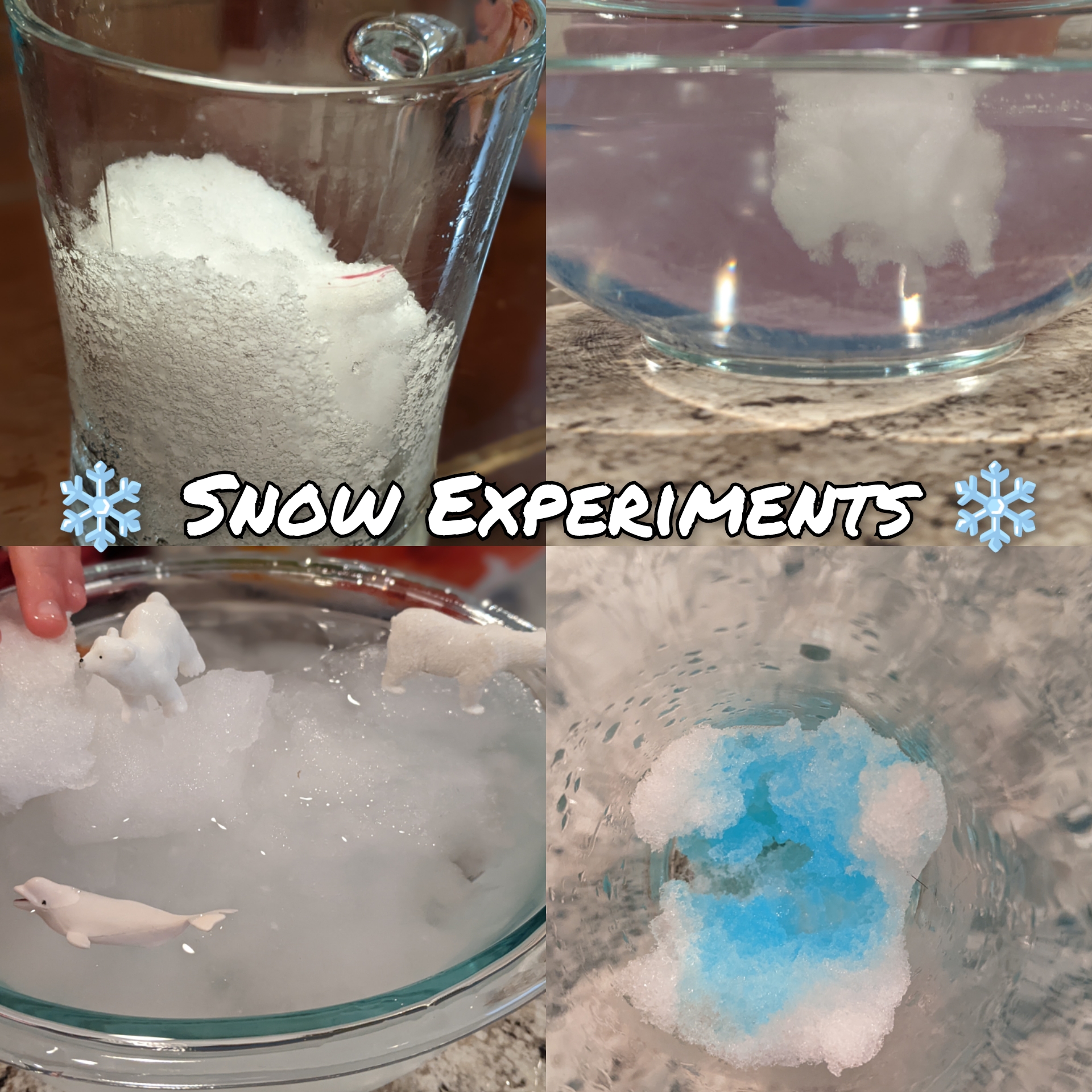
Here’s three fun, easy experiments to do at home with your kids when it snows!
Experiment 1:
Question: How much water is in a cup of snow?
What you need:
- Clear glass or cup filled with fresh snow
- Dry erase marker
What to do:
- Mark the top of the snow in the glass with the dry erase marker.
- Ask your kids what their hypothesis is.
- Wait for all the snow to melt.
- Mark the top of the water in the glass with a dry erase marker.
- Optional: Measure the difference.
What’s happening? When water freezes, it takes up more volume. When it melts, it takes up less volume. This is because water is less dense when it freezes.
Experiment 2:
Question: Does snow sink or float?
What you need:
- Bowl filled with cold water.
- A spoonful of snow (if the snow if packed, results are more noticeable)
- Optional: Toy polar animals such as penguins, polar bears, etc.
What to do:
- Ask your kids their hypothesis of what will happen.
- Grab a snowball and toss it into the bowl of water and observe what happens.
- Grab some toy polar animals, let the kids add as much snow as they like and let them explore a tiny habitat with their imagination.
What’s happening? Snow floats in water because it is less dense. This is also why iceburgs float.
Experiment 3:
Question: What will oil, dish soap, food coloring and salt do to slow?
What you need:
- Spoonful of oil
- Spoonful of dish soap
- A few drops of food coloring
- Teaspoon of salt
- 4 clear glasses or cups half filled with snow
What’s happening?
Dish soap & Snow: Soap lowered the freezing point immediately and so the snow melted right away.

Oil & Snow: The oil acted the same way as the soap. After the snow melts, the oil will rest above the water because it is less dense.

Food Coloring & Snow: The food coloring colored the snow. When the snow melted, we had lovely red water.

Salt & Snow: The salt dissolves in the snow fairly quickly. Overtime the salt will lower the ices freezing point. Ice in contact with salty water will melt, which creates more liquid water, which dissolves more salt. This then causes more ice to melt, and so on.

Hope you enjoy these fun experiments with your kids! The best part is that they can be done inside when it’s super cold outside.
Wishing you a snow day!
Kristen



Leave a Reply